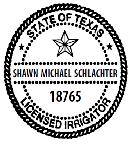Healthy soil is the key to healthy plants.
We recommend regular fertilization with slow release organic fertilizer, humates and liquid seaweed extract every 6 to 8 weeks during the growing season on all bedding plants both annuals and perennials. Treating your lawn minimally 3 times per year (or when you do your beds) and your trees at least once a year.
9 Steps to a sustainable garden using organic approach:
#1 Plant the right plant for the site- Don’t ask a plant to do something it’s genetically not designed to do. Instead, use natives or adapted varieties. Use plants that like the area you are planting.
#2 Stop using chemical fertilizers and chemical pesticides- These items weaken the soil, the plants and kill your allies like earthworms, good insects, and beneficial microorganisms. Without your allies, problems are compounded.
#3 Add organic matter whenever possible- Mulch/Compost all bare areas. Leave grass clippings on turf. Add compost regularly to all beds. At least 2x’s per year, best before summer and winter.
#4 Use organic fertilizers and add quality organic amendments regularly- Organic Fertilizers increase microbial life, improve soils and provide the best nutrition for plants. Quality organic amendments, like Humates and micro nutrients and minerals create energy in the soil, increase Microbial activity and provide long term release of valuable minerals, many of which are not available in synthetic fertilizers.
#5 Increase oxygen in your soils- Adding compost and organic fertilizers to your soil will improve structure by allowing a better flow of oxygen around the roots. Aerate turf areas regularly. Plants need oxygen more than they need nitrogen.
#6 Balance the pH and adjust the minerals in your soils to proper levels- For plants to work at the optimum, they need a balanced pH and minerals at the right levels. For example, we generally want 5 to 1 Calcium to Magnesium ratio. Make use of soil tests and adjust accordingly.
#7 Biodiversity- Avoid monoculture of crops and plantings and encourage a rich diversity of animal life like beneficial insects.
#8 View pest insects and diseases as indicators- Pest insects and diseases are the symptoms of a deeper problem. It’s not natural for a healthy plant to have problems. Find out what’s really wrong and why the plant is under stress.
#9 Spray Fish / Seaweed / Molasses / Humic Acid Concentrates everywhere- Nothing beats this combination for plant nutrition, plant stimulation, and disease and pest insect resistance. We recommendMaxicrop seaweed extract.
Healthy soils equal healthy plants and healthy plants are productive without the cost of pesticides.
Unless the soil is alive, truly alive, artificial stimulators like chemical fertilizers only sustain plant growth which bypasses the natural process. Chemical fertilizers are derivatives of mineral salts in a concentrated form. The high salts in chemical fertilizers destroy soil life. Plants existing on only chemical fertilizers require increased amounts of pesticides because the plants cannot build natural immunities. If chemical fertilizers are used, insist on good quality, avoiding all fertilizers with Ammonia Nitrate and Potassium Chloride. (Muriate of Potash)
For a well-managed soil system and therefore productive plants, constantly add organic matter as a food source for microorganisms and to improve soil health and structure. Return crop residues, lawn clippings and add mulch/compost to crops whenever possible. Avoid the use of soil applied insecticides, herbicides and fungicides whenever possible as these agents are poisons often with long residuals that destroy soil life and weaken the entire system. For example, comparing the year 1950 to 1980 American farmers applied 12 x as much pesticides (50 million lbs.-600 million lbs.) and still suffered twice the crop loss due to insects.
Encourage the use of organic fertilizers like MicroLife 6-2-4as they not only feed the plant, they provide a food source for soil microorganisms. Adjust the pH in the soil, provide proper drainage, and reduce soil compaction. Poor health in soils is breeding grounds for weeds and diseases. If you do get weeds hand pull large weeds and work on soil health for overall control. Mulch bare soil in beds and avoid all synthetic herbicides that are known to cause health issues and pollute ground water. Spray noxious weeds as needed with vinegar-based solution. (Ask us for recipe)
Checklist for Healthy Soils: There are indicators that will tell us the health of the soil. The key to healthy and productive plants is the soil. Here are some indicators that you can use.
- #1 The Look, Feel and Smell of the Soil– Healthy soil will look rich & healthy, dark with organic matter & humus. Healthy soil will feel good in your hand, crumbly & friable. Not too loose or too tight. Healthy soil will smell sweet, kind of like chocolate because of microorganism activity.
- #2 Earthworms– Healthy soil will have 10 Earthworms or more per square foot. Without earthworms you do not have healthy soil, at the most you will have is an artificial growing medium in which the plants can only live through constant chemical inputs. A paradox: consistent use of chemicals kills earthworms.
- #3 Microbial Count– Healthy soils will have a Microbe count of 500-800 million per gram of soil. Soils that are near sterile conditions will have a count of 4 million microbes per gram. When you have healthy Microbe counts you have more productive plants with less cost. Organics give you that healthy soil.
For more information go to- http://www.microlifefertilizer.com/ , http://www.dirtdoctor.com/ ,or email us at gardens@ravenscourt.us
A great video about the transformations possible with healthy soil!
http://carbonnationmovie.com/about/clips/225-new-video-soil-carbon-cowboys
A great resource and conceptual framework for thinking about the soil and what it is and can be.












